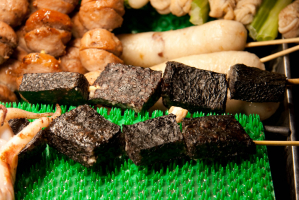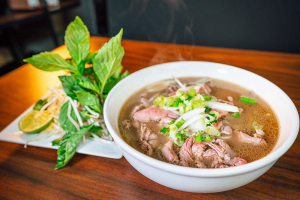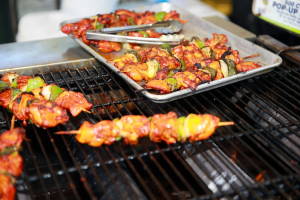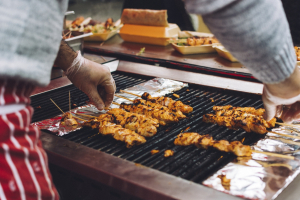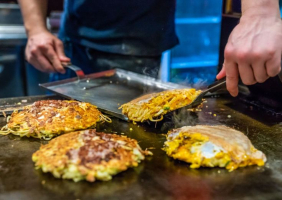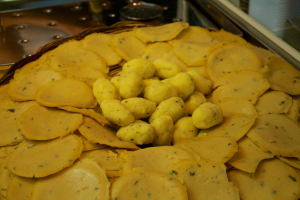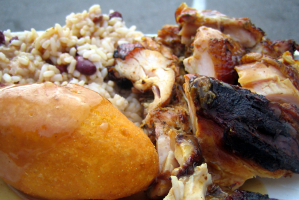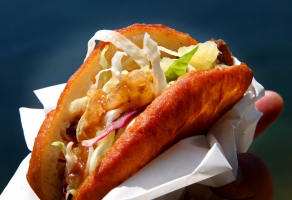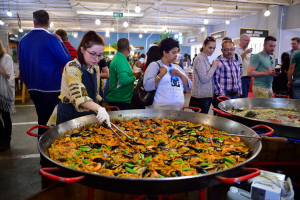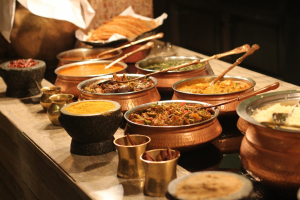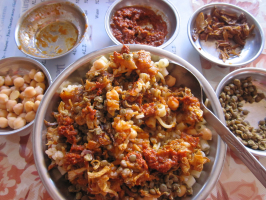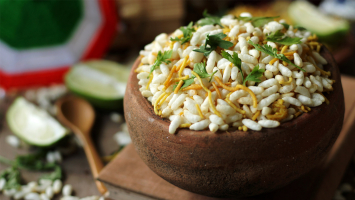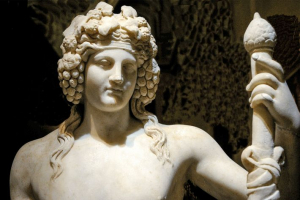Top 10 Most Popular Ancient Greek Foods
For the most part, ancient Greek food was characterized by frugality, reflecting agricultural hardship, but there was a wide variety of ingredients available, ... read more...and affluent Greeks were known to celebrate with elaborate banquets and feasts. Here are the 10 most popular Ancient Greek foods.
-
Soaking softened the wheat grains, which were then reduced into gruel or crushed into flour ( ἀλείατα aleíata) and kneaded and fashioned into loaves (ἄρτος ártos) or flatbreads, either plain or with cheese or honey. Leavening was known; the Greeks used an alkali (νίτρον nítron) and wine yeast as leavening agents later on. Dough loaves were baked at home on legs in a clay oven (ἰπνός ipnós).
Bread wheat, which was difficult to grow in Mediterranean climates, and the white bread it produced were identified with the aristocratic classes in the ancient Mediterranean, while the poor ate coarse brown bread made from emmer wheat and barley.
A simpler process entailed setting lighted coals on the floor and covering the mound with a dome-shaped lid (πνιγεύς pnigeús); when the embers were hot enough, they have brushed aside, and dough loaves were laid on the warm floor. The lid was then replaced, and the coals were gathered on the cover's side. This procedure is still practiced in Serbia and other Balkan countries, where it is known as crepulja or sač.
The stone oven was not invented until the Roman era. Solon, an Athenian statesman from the sixth century BC, recommended that leavened bread be saved for feast days. Leavened bread was offered at the market by the end of the 5th century BC, though it was expensive.
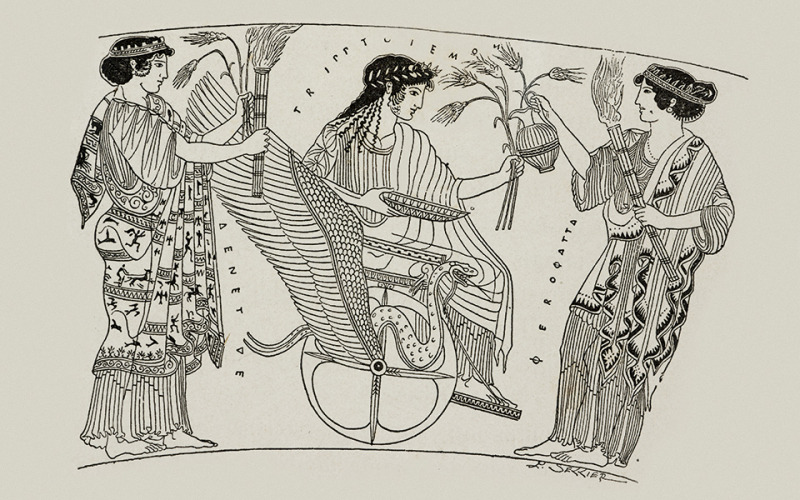
greece-is.com 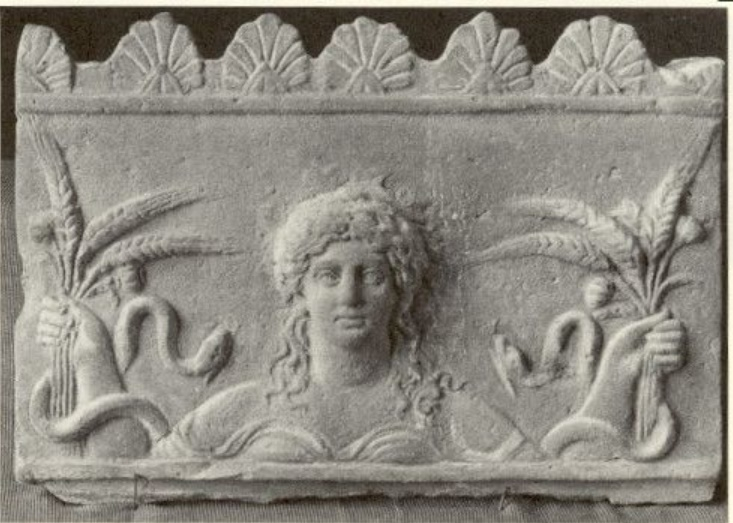
pinterest.ie -
Barley was easier to grow than wheat, but it was more difficult to bake bread from. Bread made from barley was filling yet heavy. As a result, it was frequently roasted before being processed into coarse flour. μᾶζα maza, the traditional Greek dish, was made with barley flour. Maza can be eaten raw or cooked, as a broth, or formed into dumplings or flatbreads. It, like wheat bread, might be enriched with cheese or honey. Aristophanes used the term ἐσθίειv κριθὰς, literally to eat only barley, in Peace, with a meaning akin to the English diet of bread and water.
Millets are a diverse genus of small-seeded grasses that are commonly farmed as cereal crops or grains for fodder and human sustenance all over the world. Millet was growing wild in Greece as early as 3000 BCE, and bulk millet storage containers dating from the Late Bronze Age have been discovered in Macedonia and northern Greece. According to Hesiod, "beards grow round the millet, which men sow in July." Theophrastus placed millet with wheat in his "Enquiry into Plants" in the third century BCE. Northern Greece and Macedonia According to Hesiod, beards grow round the millet, which men sow in July. Theophrastus placed millet with wheat in his "Enquiry into Plants" in the third century BCE.
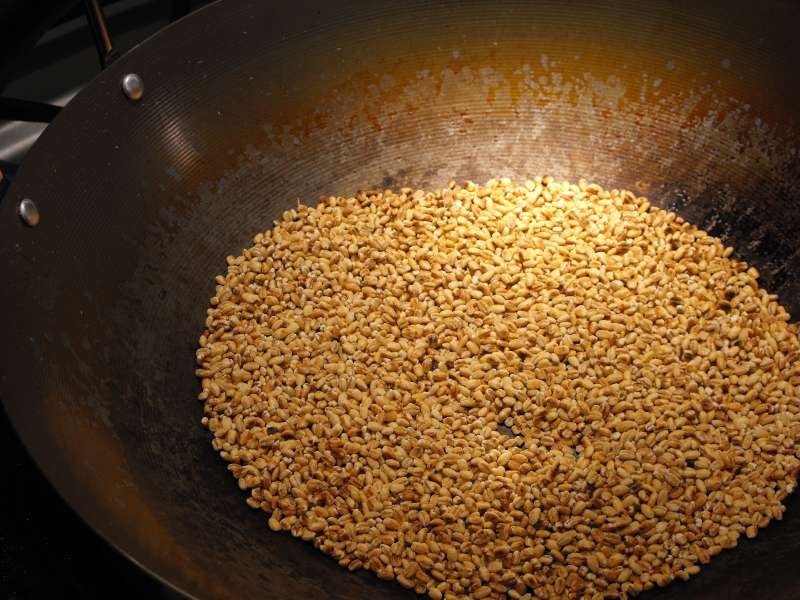
ancientfoodstoday.blogspot.com 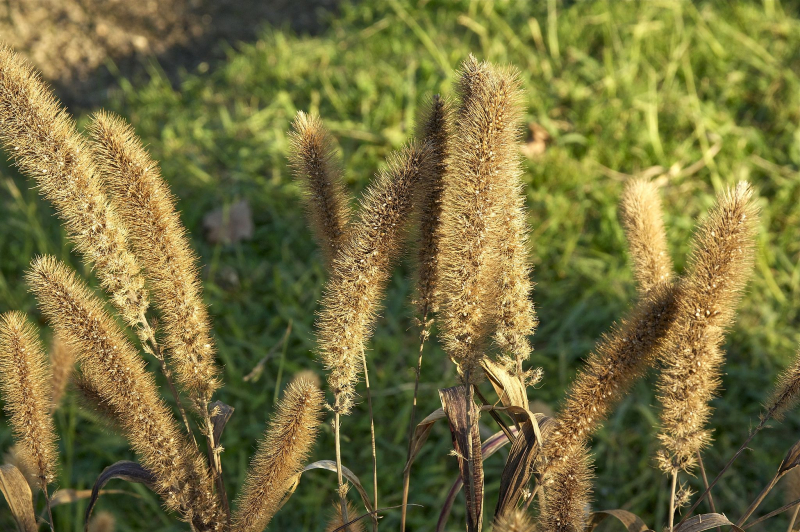
notjustdormice.wordpress.com -
One of the most popular Ancient Greek foods is wine. The Greeks are thought to have produced red, rosé, and white wines. As is the case now, the quality ranged from basic table wine to rare vintages. The best wines were typically thought to come from Thásos, Lesbos, and Chios.
Later, Cretan wine rose to prominence. Country folks developed a secondary wine from water and pomace (the leftover from squeezed grapes), blended with lees, for their personal consumption. The Greeks occasionally sweetened wine with honey and created therapeutic wines with thyme, pennyroyal, and other herbs. They were familiar with pine resin-flavored wine by the first century, if not before (modern retsina).
The wine was generally cut with water. Although akraton, or "unmixed wine," was known to be consumed by northern barbarians, it was supposed to cause insanity and death. The wine was blended in a krater, from which slaves poured an oinochoe into the drinker's kylix (jugs). The wine was also supposed to have healing properties. Aelian writes that wine from Heraia in Arcadia made men stupid but women fertile; on the other hand, Achaean wine was considered to induce abortion. Aside from these medicinal uses, Greek society frowned on women consuming wine. Aelian claims that a Massalian law outlawed this and barred women from drinking water. Sparta was the only city where women drank wine on a regular basis.
Wine's impact in ancient Greece aided trade with surrounding countries and regions. The wine was connected with several behavioral and cultural elements. It also caused a significant alteration in Ancient Greece. Through trade and colonialism, the ancient Greeks pioneered new methods of viticulture and wine production, which they shared with early winemaking settlements in what is now France, Italy, Austria, and Russia, among others. Along the way, they had a significant impact on the ancient European winemaking traditions of the Celts, Etruscans, Scythians, and, eventually, the Romans.
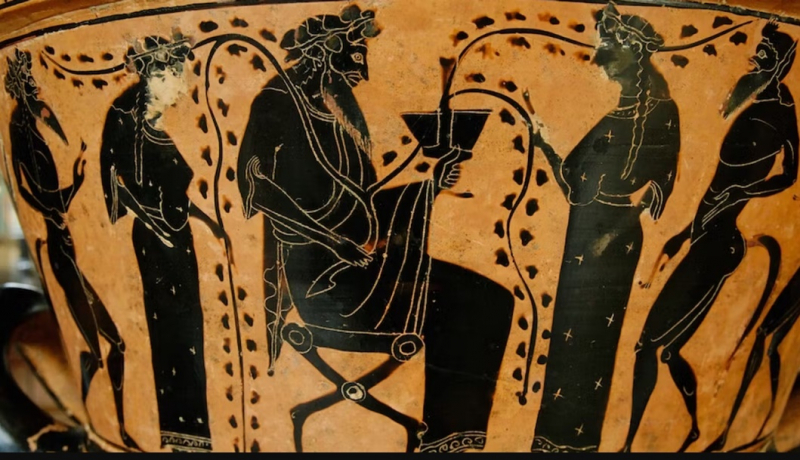
greekflavours.com 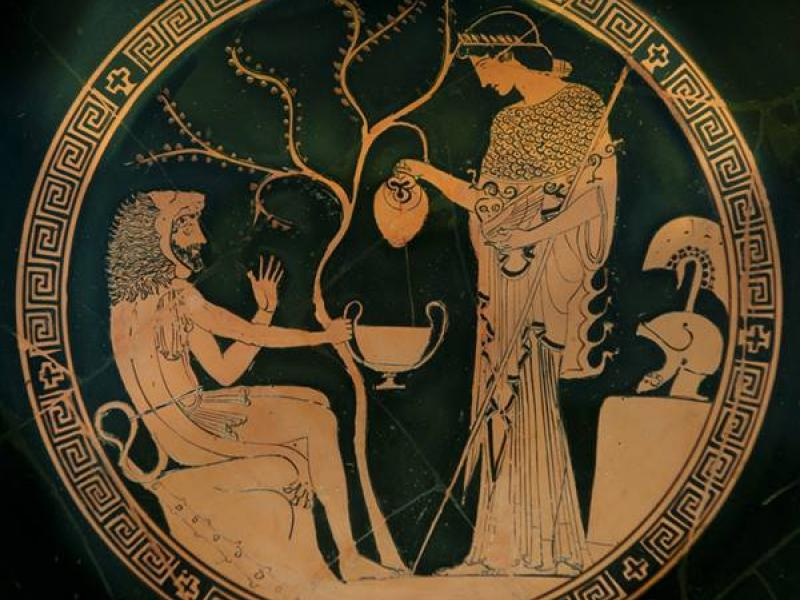
helession.com -
Spices and seasonings were popular condiments and played an important role in ancient Greek food culture. Cassia is the first spice mentioned in Ancient Greek texts. Sappho (6th-7th century BCE) mentions it in her poem about Hector and Andromache's marriage. Sappho was an Archaic Greek poet from the island of Lesbos, Eresos, or Mytilene. Sappho is well-known for her lyric poetry, which was designed to be sung together with music she was widely considered one of the finest lyric poets in ancient times, and she was given titles such as "Tenth Muse" and "The Poetess." Cassia is one of several Cinnamomum species grown largely for its aromatic bark, which is used as a spice. The buds were also utilized by the ancient Romans as a spice, particularly in India. The tree can reach a height of 10-15 m (33-49 ft) and has greyish bark as well as stiff, elongated leaves that are 10-15 cm (3.9-5.9 in) long and scarlet when young.
The ancient Greeks used at least two types of pepper in cooking and medicine: one of Aristotle's students, Theophrastus, listed both black pepper and long pepper in his description of the plants that appeared in Greece as a result of Alexander's conquest of India and Asia Minor "one is round like bitter vetch...: the other is elongated and black and has seeds like those of a poppy: and this kind is much stronger than the other. Both, however, are heating...".
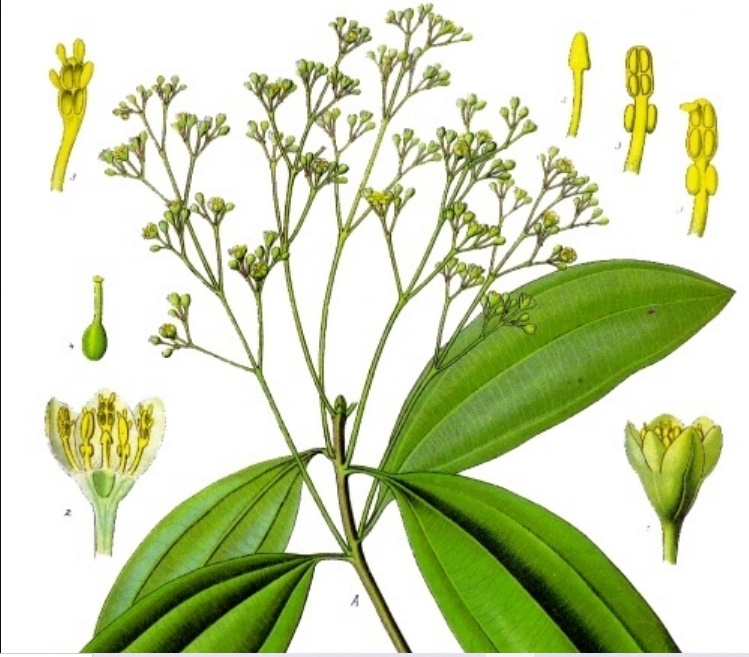
cassia -en.wikipedia.org 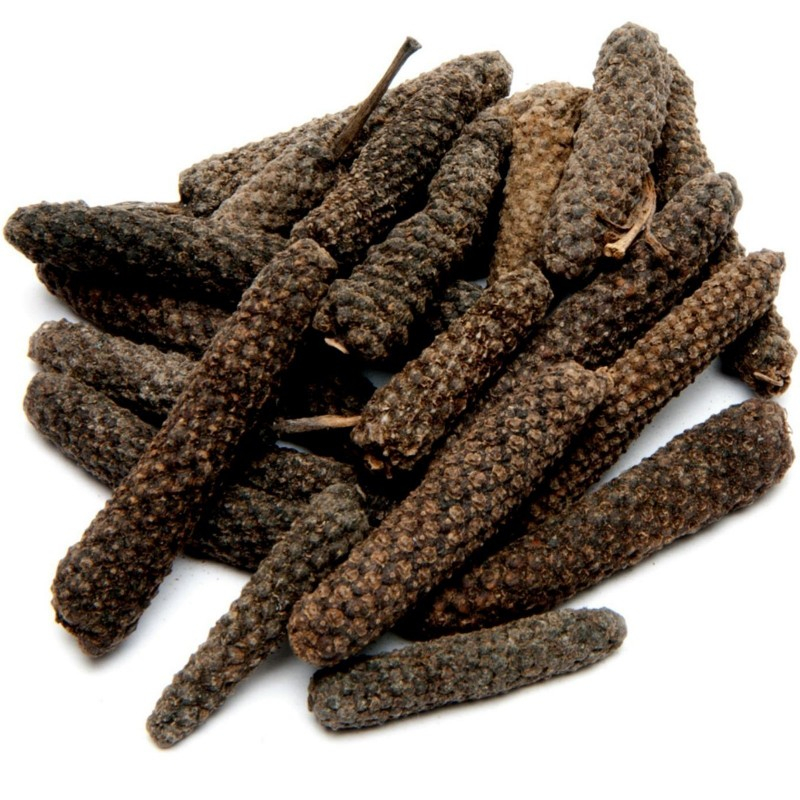
long pepper -exotic-seeds.store · In stock -
Greeks raised quails and chickens for their eggs. Some authors also praise pheasant eggs and Egyptian goose eggs, both of which are apparently uncommon. As an hors d'œuvre or dessert, eggs were soft- or hard-boiled. In addition, whites, yolks, and entire eggs were employed in the making of foods.
In his Works and Days, Hesiod recounts "milk cake with goat milk drained dry." Milk (gala) was consumed by country residents, although it was rarely utilized in cooking.
The Greeks recognized butter as a culinary feature of the Thracians of the northern Aegean coast, whom the Middle Comic poet Anaxandrides dubbed "butter eaters." Cheesemaking was common by the 8th century BCE, as evidenced by the technical jargon linked with it in The Odyssey. The cheese was consumed alone, with honey, or with vegetables. It was also employed in the production of a variety of foods, particularly fish dishes (see recipe below by Mithaecus).
Other dairy products were popular among Greeks. Πυριατή pyriatē and Oxygala (oξύγαλα) were curdled milk products, similar to cottage cheese or possibly yogurt. Most notably, goat and ewe cheese (tyros) was a staple diet. Fresh cheeses (often wrapped with Drakontion leaves to keep them fresh) and hard cheeses were offered in separate stores; the former was around two-thirds the price of the latter. The Odyssey The cheese was consumed alone, with honey, or with vegetables. It was also employed in the production of a variety of foods, particularly fish dishes.

healthyrecipesblogs.com 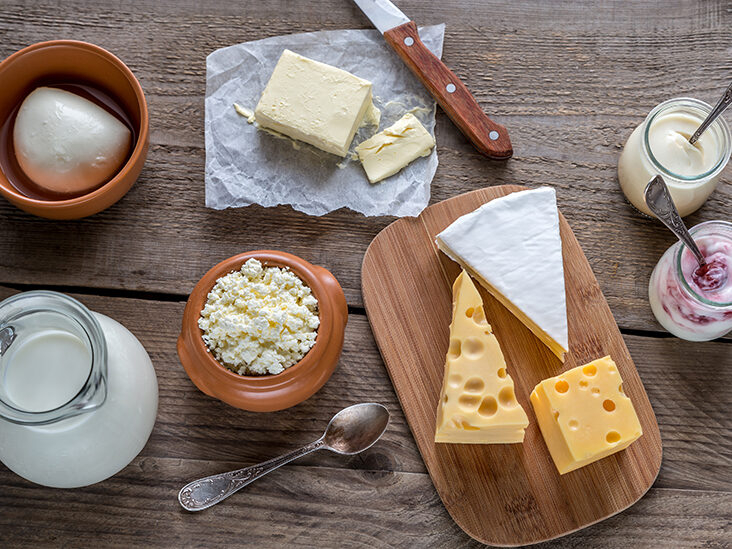
healthline.com -
The most popular Ancient Greek foods are bread and cake. Commercial bakeries were well known and widespread when Rome conquered Greece in the third century B.C. Indeed, Pliny the Elder claims that the work of skilled artisans shifted bread production from the family to the "industrial" (according to Pliny, starting from 171 BC). Plato favored home production over commercial production, and in Gorgias, Thearion the baker is described as an Athenian novelty who sells goods that can be made at home.
Bread in ancient Greece was served with opson ὄψoν, which is sometimes translated as "relish" in English. This was a catch-all term for anything that went with this staple food, whether it was meat, fish, fruit, or vegetables.
Cakes may have been consumed for both religious and secular reasons. Philoxenus of Cythera describes some cakes eaten as part of an elaborate dinner in the traditional dithyrambic style used for sacred Dionysian hymns: "mixed with safflower, toasted, wheat-oat-white-chickpea-little thistle-little-sesame-honey-mouthful of everything, with a honey rim". The charisios were eaten at the "all-night festival," according to Athenaeus, but John Wilkins observes that the line between sacred and secular might be blurred in antiquity. Melitoutta (Ancient Greek: μελιτοῦττα) was a honeycake mentioned by ancient writers.
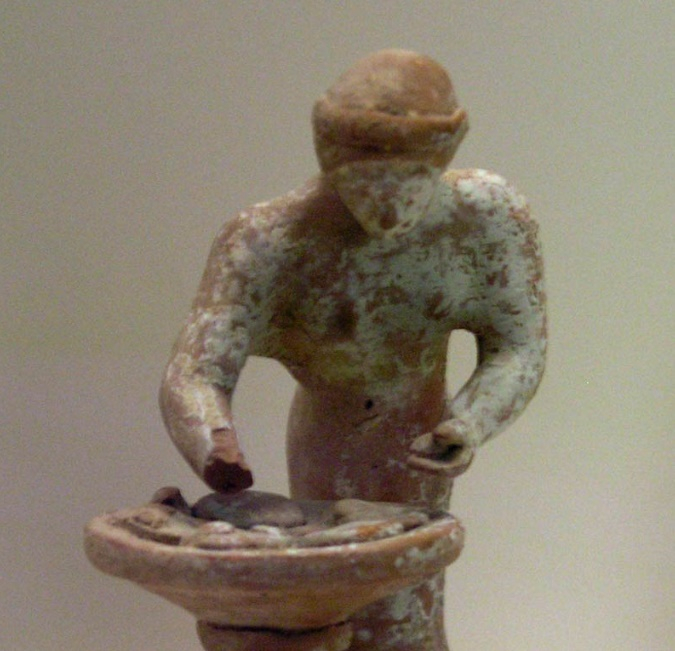
Woman kneading bread, c. 500–475 BC -en.wikipedia.org 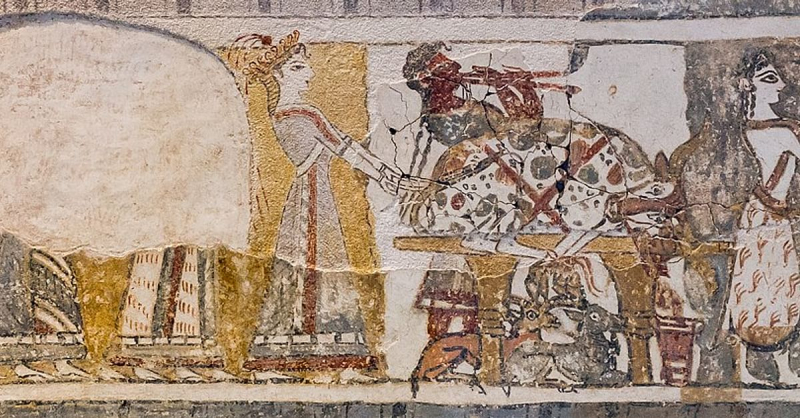
-
Legumes were crucial to the Greek diet and were gathered in the Mediterranean region since prehistoric times, with lentils being the earliest and most widespread, having been discovered in archeological sites in Greece dating back to the Upper Paleolithic period. Lentils, as one of the first cultivated crops introduced to Greece, are frequently found at Upper Paleolithic archaeological sites.
Bitter vetch has been present in Greece from at least 8000 BCE and was occasionally eaten during the Classical period. The majority of ancient literature that discusses it portrays it as animal fodder with an unpleasant flavor. Several classical authors propose medical use for it. In the Iliad, Homer used the threshing of a black bean (not black turtle beans) as a metaphor. Fava or Broad? Beans are uncommon in archaeological sites but prevalent in classical literature. They were consumed as both main courses and desserts (mixed with figs). In addition to being described as food, classical authors assign numerous medicinal properties to beans.
Chickpeas are mentioned almost as frequently in classical literature as lentils (by Aristophanes and Theophrastus, among others), but are infrequently found in Greek archeological sites. Because they have been discovered in prehistoric sites in the Middle East and India, their use was most likely a late addition to the Ancient Greek diet. Grass peas, like bitter vetch, were planted in ancient Greece mostly for animal fodder, but they were occasionally eaten during times of famine.
Lupin (or Lupine, Lupini) beans have been farmed in Egypt from at least 2000 BCE and have been present in the Mediterranean region since prehistoric times. By the time of the Greeks, they were being used for both food and animal fodder. Peas can be found at some of Greece's earliest archaeological sites, but they are rarely referenced in classical literature. However, Hesiod and Theophrastus both mention them as Greek food.
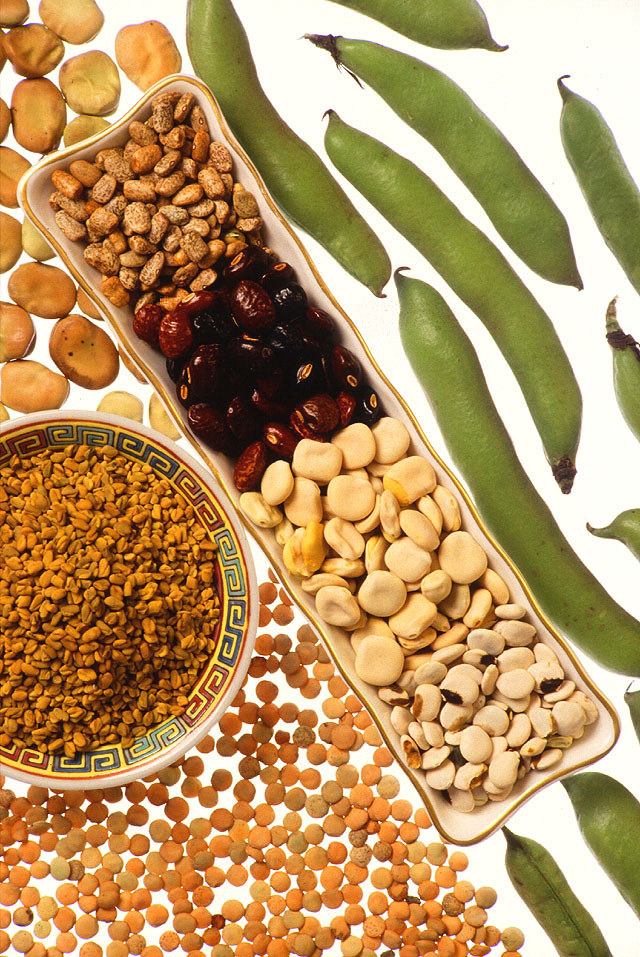
en.wikipedia.org 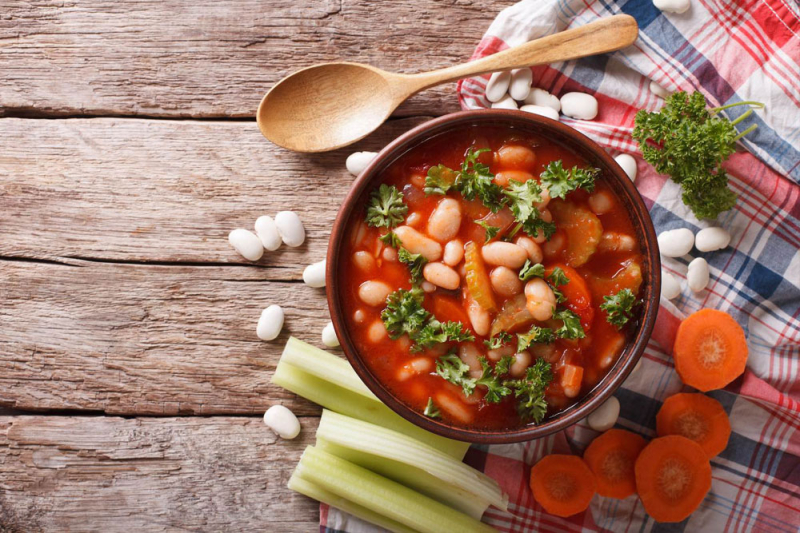
itsallgreektome.london -
Fruit and vegetables were an important part of the ancient Greek diet because they consumed far less meat than the normal diet of modern nations. Legumes would have been important crops because their ability to repair depleted soil was known at least by Xenophon's time. Hesiod (7th-8th century BCE) describes various ancient Greek crops, including artichokes and peas.
Vegetables were consumed in soups, boiled or mashed ((ἔτνoς etnos), and seasoned with olive oil, vinegar, herbs, or gáronγάρον gáron, a fish sauce akin to Vietnamese fish sauce. Heracles was represented as a glutton with a penchant for mashed beans in Aristophanes' comedies. Poor families consumed oak acorns (βάλανοι balanoi). Olives, either raw or preserved, were a popular starter.
Fresh vegetables were expensive in the cities, therefore the poorer city people had to make do with dried veggies. The workman's favorite dish was lentil soup (φακῆ phakē). Soldiers' common foods were cheese, garlic, and onions. Dessert consisted of fresh or dried fruits and nuts. Figs, raisins, and pomegranates were notable fruits. Athenaeus recounts a dish consisting of figs and broad beans in his Deipnosophistae. Dried figs were also served as an appetizer or with wine. They were frequently served with grilled chestnuts, chickpeas, and beechnuts in the latter case.
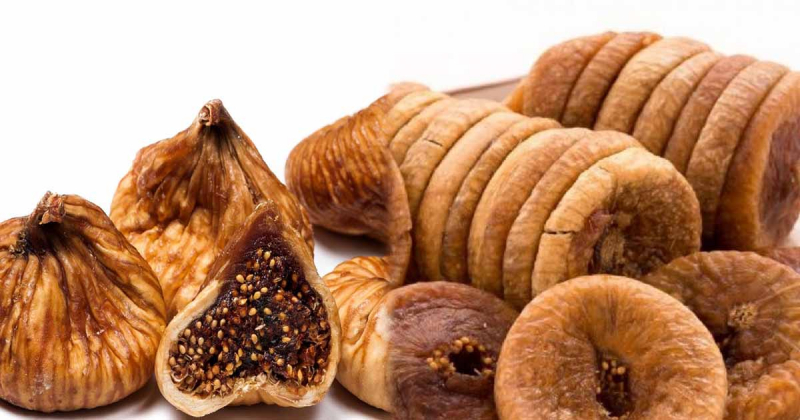
dried figs -greekcitytimes.com 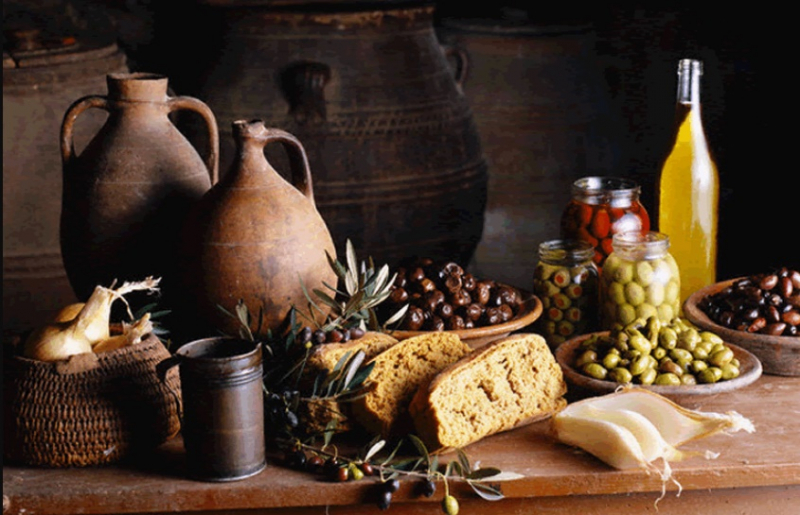
greecehighdefinition.com -
One of the most popular Ancient Greek foods is fish. Herodotus mentions a "large fish... of the sort called Antacaei, without any prickly bones, and good for pickling," which was most likely a beluga found in Greek colonies around the Dnieper River. Skipjack tuna, tuna, swordfish, sea raven, black carp, porpoise, and mackerel are all mentioned by other ancient writers.
Fresh fish and seafood (squid, octopus, and shellfish) were popular on the Greek islands and coast. They were eaten locally but were more frequently exported inland. Sardines and anchovies were the standard diets for Athenians. They were occasionally sold fresh, but more often salted. A late third-century BC stele from the little Boeotian city of Akraiphia on Lake Copais includes a list of fish prices. Skaren (possibly parrotfish) was the cheapest, whereas Atlantic bluefin tuna was three times as expensive. Yellowfin tuna, red mullet, ray, swordfish, or sturgeon, a delicacy eaten salted, were common ocean fish. Lake Copais was famous across Greece for its eels, which were celebrated by the hero of The Acharnians. Other freshwater fish included pike, carp, and the underappreciated catfish. In classical Athens, eels, conger-eels, and sea-perch were regarded as a delicacy while sprats were cheap and readily available
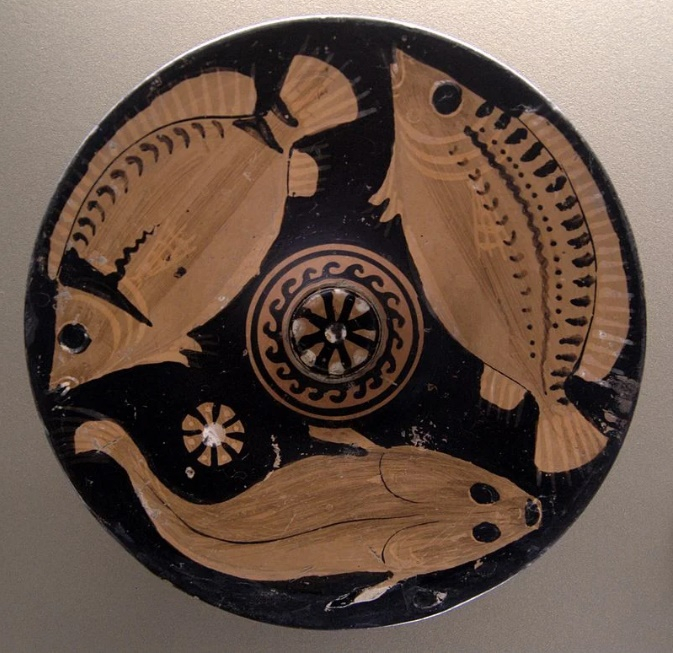
Ancient Greeks were Gourmands with a Preference for Fish -GreekReporter.com 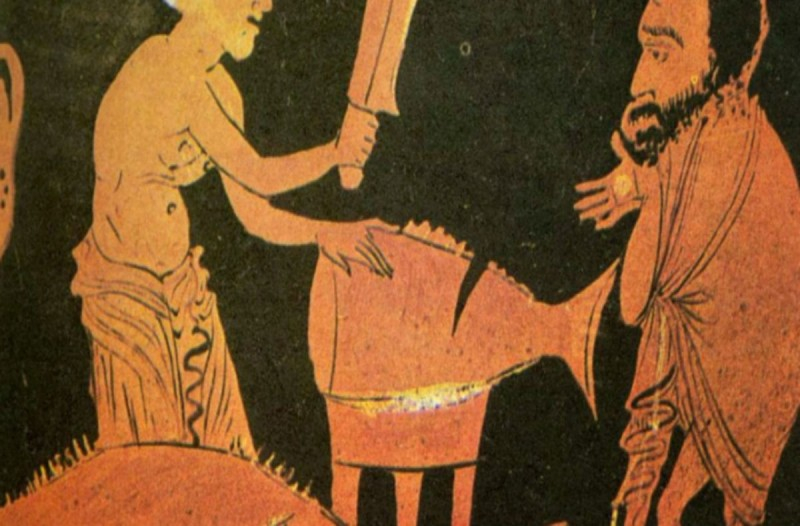
quora.com -
Meat is substantially less common in poems from the fifth century BC onwards than it is in the earliest poetry, but this could be due to genre rather than actual evidence of changes in farming and eating traditions. Fresh meat was most typically eaten at sacrifices, but the sausage was considerably more popular and was devoured by people from all socioeconomic backgrounds. In addition to eating animal meat, the ancient Greeks frequently consumed inner organs, many of which were considered delicacies, such as paunches and tripe.
Spartans primarily consumed melas zōmos (μέλας ζωμός), which translates as "black soup," a soup made from pigs' legs and blood. It contained pork, salt, vinegar, and blood. The dish was served with maza, figs, and cheese, and was occasionally accompanied by game and fish. Aelian, a 2nd-3rd century author, reports that Spartan cooks were forbidden from cooking anything other than meat.
Fish and meat consumption varied according to household affluence and geography; in the country, hunting (mainly trapping) allowed for the consumption of birds and hares. Peasants also had farmyards where they could keep hens and geese. Landowners with a little more money may farm goats, pigs, or sheep. Except for pork, meat was pricey in the metropolis. A piglet cost three drachmas in Aristophanes' day, which was three days' pay for a public servant. Sausages were popular among both the poor and the wealthy. Archaeological excavations at Kavousi Kastro, Lerna, and Kastanas have revealed that dogs, in addition to the more often consumed pigs, cattle, sheep, and goats, were occasionally devoured in Bronze Age Greece.
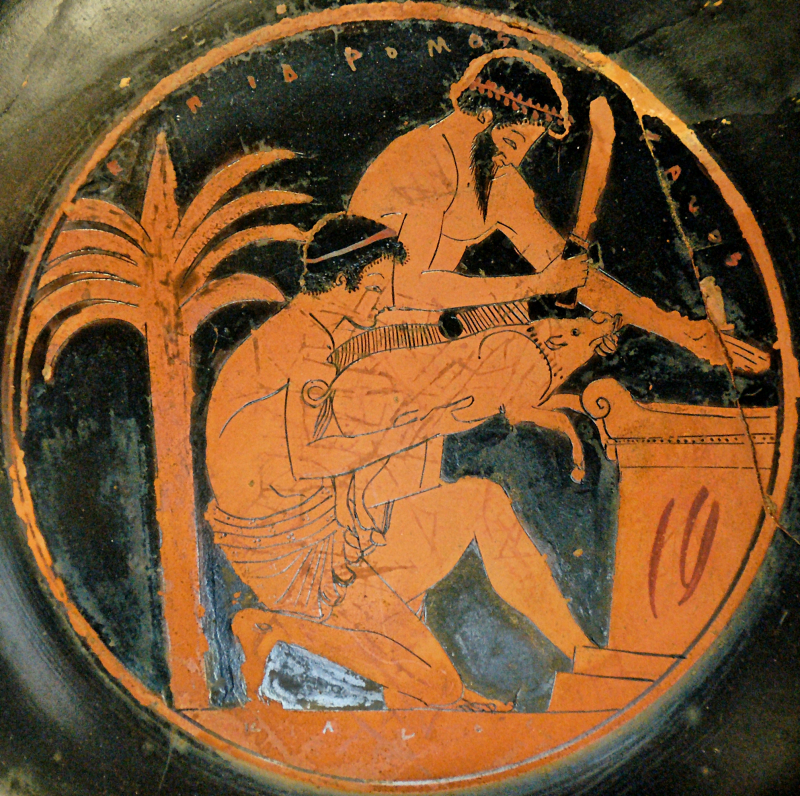
en.wikipedia.org 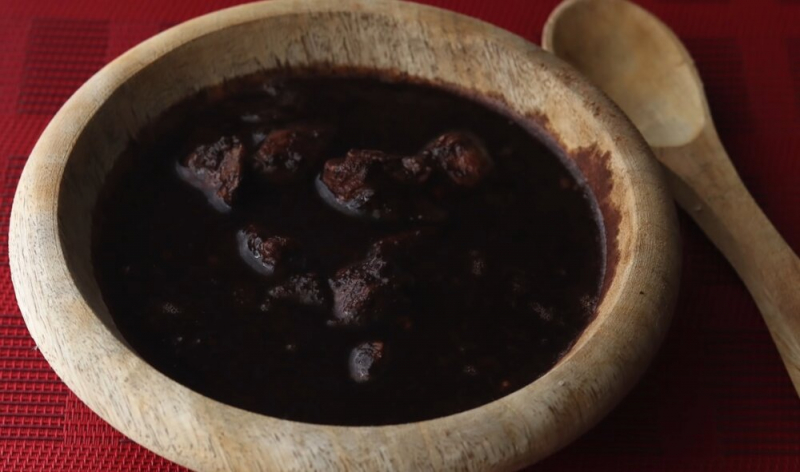
melas zōmos -greecehighdefinition.com












